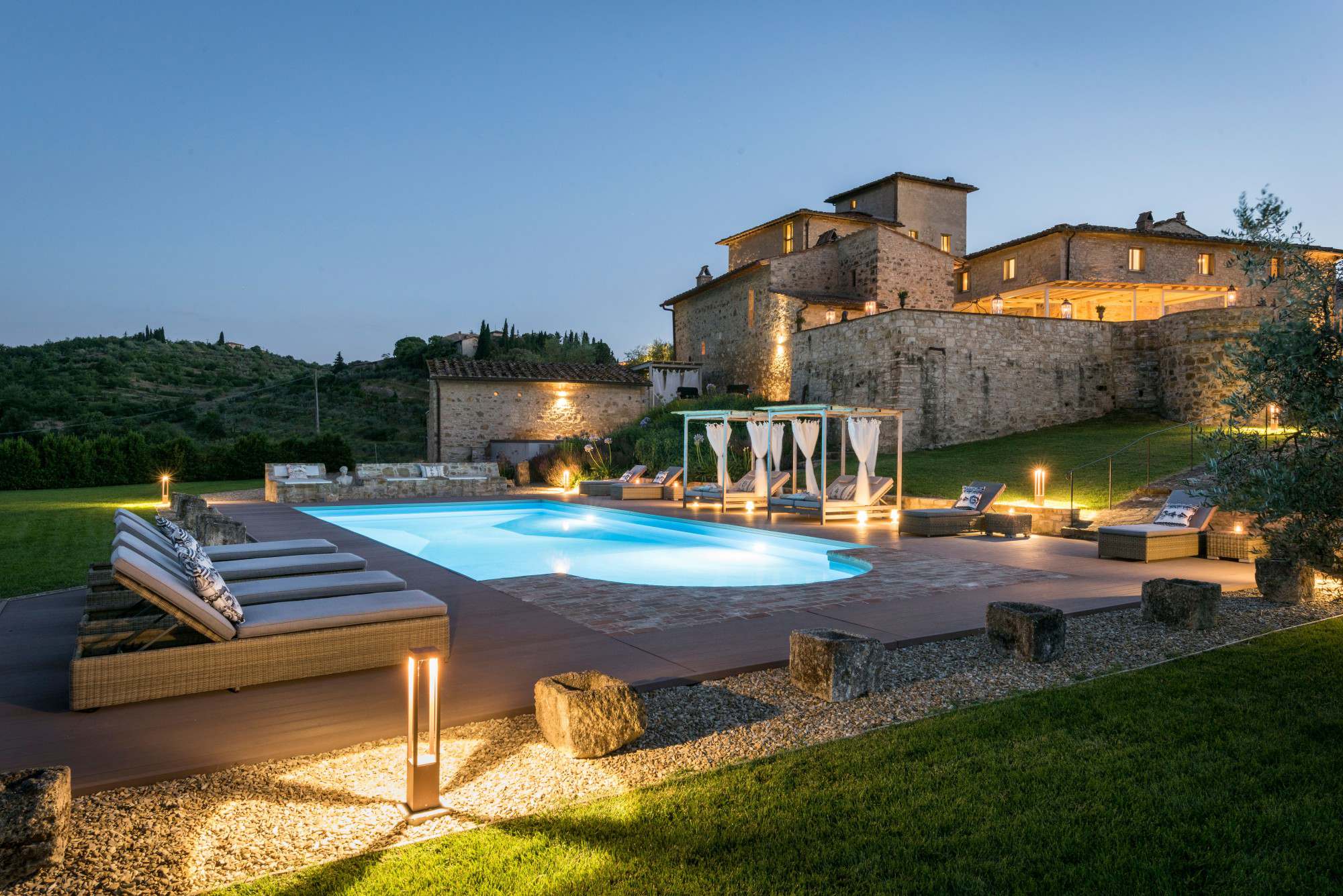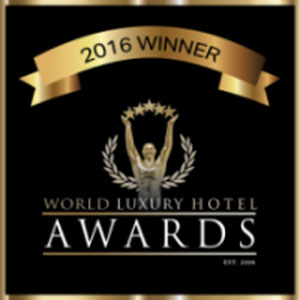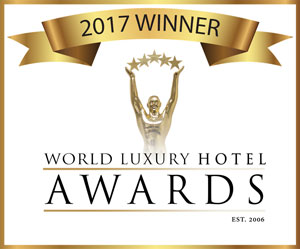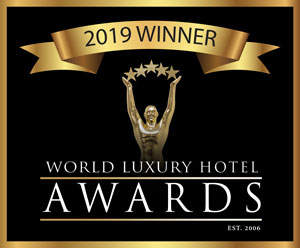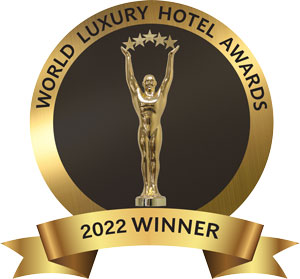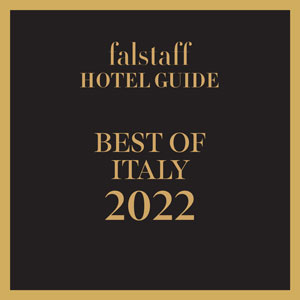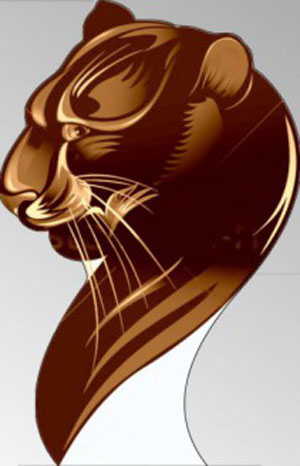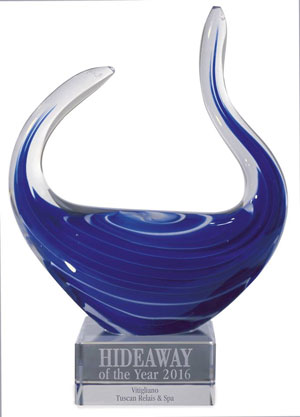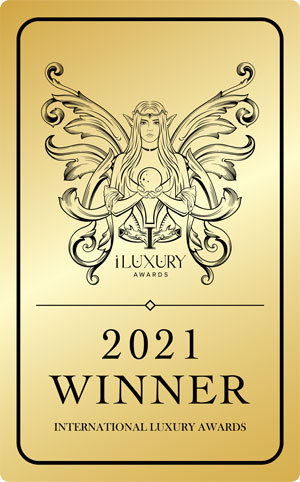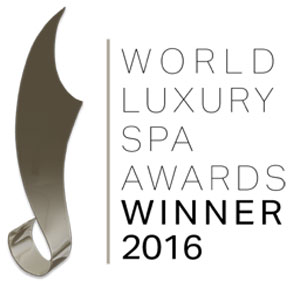Our Philosophy
Here is an excerpt from an interview with the owner and founder Marion Hattemer
1. What made you decide to, or how did you conceive the idea of buying and renovating an ancient rural property?
It was our desire for roots – of all the places where we have lived, it was Vitigliano that we chose as the place where we want to grow old. After countless moves from one home to another in various countries, and following the deaths of our parents, we wanted to find somewhere that everyone in the family could call HOME, a place where our 4 children could always – and would always want to – come back to. We knew that only a truly historical building could give us that, and we found one that is 1,000 years old. Three fundamental emotional criteria governed our decision – firstly, we wanted a property with a history (the renowned Verrazzano family lived here for centuries); secondly, a hilltop location with unobstructed views of what is, for us, one of the most beautiful natural landscapes with cypress trees, olive groves (we really wanted to produce our own oil) and vineyards; and thirdly, a location in a country that stirs our emotions and where we feel grounded and in tune with ourselves, namely Italy. In addition there were, of course, pragmatic prerequisites for our “life in the country” to function smoothly – a small local community with an infrastructure in close proximity (Greve in Chianti) AND a city rich in culture with a railway station and an airport (Florence).
2. Describe the moment when you saw the property for the first time – how did you feel, what were your first impressions?
Never before have I felt such a sense of security and reassurance, in the knowledge that here, in these very walls, women brought up their children 1,000 years ago. We are surrounded by history – the tower, from which the Verrazzano family viewed their land; the indent in the stone staircase in which the men sharpened their knives; the centuries-old flagging in front of the buildings with grooves formed by oxcarts… the list goes on and on. But romanticism and nostalgia aside, Vitigliano was basically a ruin and a risky project. It took 2 years of negotiations before we were finally able to sign contracts, and then more than 4 years of renovation work before it was completed to the state in which we see it today. In addition to the buildings and barns in varying degrees of dilapidation, there were also 250 olive trees growing here, and they didn’t seem to mind that they had been left to their own for so long. The olive is the most undemanding tree species, needs hardly any water and produces such wonderful, health-giving oil. I’m not a diligent farmer by any means – what with my family life and the renovation work that would be impossible. But the harvesting and the pressing of olive oil offer a wonderful experience; and it’s comforting to know that you’ve got oil that has not been contaminated or treated in any way. There is a lovely tradition here at harvest time: since it’s virtually impossible to pick all the olives from the trees by hand yourself, people from the village come and help and then the yield is shared.
3. How intensively involved were you, yourself, in the renovation work and furnishing? Did you have help from professional architects/interior designers?
I lived in the middle of the building site with my children throughout the 4 years of renovation work. Right at the beginning I created a little dwelling unit for ourselves, in order to be able to manage everything from here and make quick decisions, and also to enjoy the intense experience first hand. Living in the middle of a building site is rather like bringing up children – always pushed to your limits in a borderland between joy and tears. The building site really grounded me, brought me in tune with myself, made my happy and sometimes brought me to tears. But despite the apparent rosy scenario, to this day I don’t know where we found the courage – it was undoubtedly a risk. But because I was always on site and managed every single financial negation, I at least had the feeling of having everything under control – as far as that is possible on building sites. I have a wonderful architect (Christina Kammereck from Siena) who took care of all the permits and applications with respect to the historic site preservation regulations which are very strict here in the Chianti region. She also planned and commissioned all the major restoration work. I had the privilege of doing the interior design myself and, furthermore, I managed the financial side of the construction work.
4. What were your own wishes, your own goals when renovating the property?
The best architect was, in any case, the house, or rather the ruin, itself – we really didn’t want to change all that much because there is reason for everything having been built the way it was. Our task, rather, was to find out how everything had looked originally and find a way of incorporating high technical standards, in keeping with environmentally sustainable criteria, without compromising the historic appearance. For example, we now have ventilated underflooring, underfloor heating where possible, windows that comply with the very latest energy standards, large rainwater cisterns and even biological sewage filtration. What we did underestimate was that this is not only a “house,” but an independent “hamlet” in its own right requiring a suitable energy and water supply, an elaborate sewage system and functioning internet access (almost the most difficult task with stone walls up to 1 metre thick!). Although I actually studied something totally different, I found it very exciting, for once in my life, to be able to realise all my ideas and wishes. I awoke Vitigliano from its slumbers and, when designing it, I simply followed my feelings for the most part.
5. Did you meet with any (unforeseen) problems or obstacles during the renovation?
What was unforeseen was that the preconceptions one associates with building in Italy did not match reality. The local authorities supported us in everything we did. Like everywhere else, there’s a lot of bureaucracy involved, but there is no corruption. Certainly, it was difficult to take into account and negotiate the rigid building stipulations set down by the authority for the protection of historic buildings in Florence. But I had reliable craftsmen who did a fantastic job and taught me not only Italian, but also a great deal about life too. I hold them in great respect. I bought the house in order to find roots and my craftsmen “grounded” me along the way.
6. In your own words, how would you describe the style of the interior design?
I wanted rooms that surprise our guests – rooms made up of elements that cannot simply be bought. I wanted the craftsmanship of those I have been working together with for years to be clearly visible. I wanted to find materials that are centuries old and put them to use again here. For example, I got the staircase steps from an old villa in Florence and had them built in here. And I had the wood from the old wine barrels (holm oak) made into parquet flooring. A large stair tread (Serena stone) was transformed into an outside bench, my old roof beam was made into a bar counter, the day beds around the pool were made from moss-covered stones, and marble slabs from a butcher’s shop serve as sunbathing decks. There are no mass-produced, built-in wardrobes, but rather they are all hand-made, one-off pieces created by carpenters. I bought a lot of the furniture from flea markets and at auctions and then had it refurbished “Vitigliano-style” (greige in colour and with a weathered look). In Italy it is much easier to find affordable old materials and things and craftsmen who do restoration work. I have combined these furnishing with some classic pieces, which I have always liked, from the Bauhaus era, for example. We were absolutely uncompromising when it came to the beds and chose highest-quality box-spring beds. My favourite fabrics have always been those from Designers Guild. And I decided on marble for the bathrooms, since it is quarried in Carrara, less than 2 hours from here.
7. Which is your favourite spot or room and why?
That is my “Wellness House.”
Many hotels today pride themselves on their wellness center, but very often it’s a shame. The reception area is beautiful, but then you end up in a tiny, windowless treatment room with a narrow, little bed and that’s where you’re supposed to find relaxation.
I once stayed in a gorgeous hotel in Thailand and there I enjoyed the experience of lying in a spacious room with a soothing ambience. That served as my model – I had an entire barn remodeled with whirlpool, open fireplace and a tranquil area. It is a place that can be used with partner or friends as a place for contemplation or self-applied body applications with specific products.
8. Do you have any other nice anecdotes to tell us about your “project” Vitigliano? The following is an anecdote in the sense that it’s something we’ve experienced again and again – regardless of who we have been talking to. When we tell people about our project, they all react in a similar way. They are envious of us, but without actually feelings of jealousy. Perhaps they are never really jealous because Tuscany is a place that everyone loves, and a place with no celebrity allures. And we have always encountered genuine interest and admiration and the wish to have courage like ours too. I would like to inspire in all others the confidence to simply give it a try. I’m not preaching the American dream and saying that everything is possible if you really want it. But during my lifetime I have learned that, if you allow it, there will always be people there to help you – if you are willing to let them. Despite the embarrassment of not being able to speak the language, I learned that you simply have to ask for help as often as you need it, and I learned that one should never succumb to preconceived notions but rather keep an open mind.
